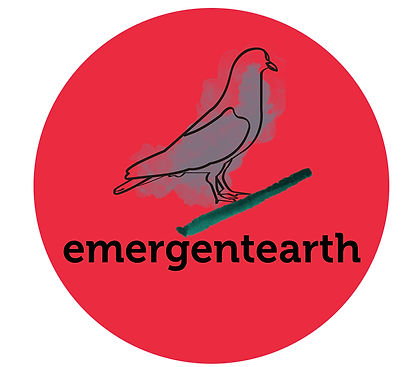an emergent
website design
by
peter jay stein, md, ma
atmosphere
asthenosphere
lithosphere
regolith
biosphere
hydrosphere



This 54 page synopsis of the evolution
of the Earth, the origin and progression of life, and the
emergence of humans as descendants of the hominin lineage, divides the last 4.57 billion years into progressively overlapping, imagistic, time segments, to outline our place in biological existence.
magnetosphere
ionosphere
FIFTY-TWO
Emergent Anthropocene Epoch:
1750 - Present
adapted from Deep Time Global Change and You,
Dr. Anthony Barnosky, 2014, sponsored by Simon Fraser University, segment 7 -
Connecting Paleo-ecology and Climate Change
:There is a State Shift approaching, in Earth's Biosphere (Nature Magazine, 2012: http://www.nature.com/nature/journal/v486/n7401/abs/nature11018.html), i.e., significant changes are occurring in Earth's complex, biological systems:
"...the global ecosystem as a whole...is approaching a planetary-scale critical transition as a result of human influence".
The Earth is reaching a tipping point, a critical threshold in the global ecological system, whereby ecological conditions are changing very rapidly and irreversibly, where the system cannot back up to its previous state.
Planetary state shifts happen:
The Pleistocene epoch shifted to the Holocene epoch: a planetary state change.
A stable set of conditions of 2 million years, shifts to the Holocene within 1,000 years.
The Holocene - the development of human civilization - 10,000 years ago to 1750.
Shifts to the Anthropocene - 300 years ago - Humans have dramatically altered the ecological conditions, i.e., human activities dramatically and significantly altered the energy balance required to run the global ecosystem, compared to the Holocene, due to the retrieval and burning of coal (fossil sunshine) out of the ground: a dramatic alteration of energy balance, the amount of energy available to power the global ecosystem.
An energy trade-off: The world's energy capacities can only support a maximum number of big-bodied animals (megafauna, or an animal larger than a goat). The world population of seven (7) billion humans will grow to 9 billion individuals by 2045, and to possibly 27 billion by 2100, if the average number of children per family ("replacement rate") remains above 1.5 children per family unit.
Human activities have become a geological force, greater than those forces that ended the last ice age.
A fixed amount of Net Primary Productivity (NPP) provides the energy to power the global ecosystem: a measure of photosynthesis, that converts sunlight into plant-life.
Climate Disruption:
where there was a temperature change of approx 9 degrees F., in a time interval of 1600 years, from the ice-age into the inter-glacial world of the Holocene, that same degree of warming has now occurred in the past 200 years.
Ecosystem Conversion:
From a prior 30% ice surface to ice-free (non-glaciated land surface) surface change, agricultural and pastural landscapes are now 40% ice-free, caused by human energy production
For example, Coral Reefs:
1) May be extinct by 2070
2) support 25% of marine life (fish)
3) support 10% of the world's fisheries, that provides protein as a source of food.
Local Societal Impact:
For example
1) Ocean water acidification destroys scallop growth and fishing, that leads to job loss
2) Increased frequency of forest fires
The Consensus Statement: The Pacific Coast Climate Pact:
